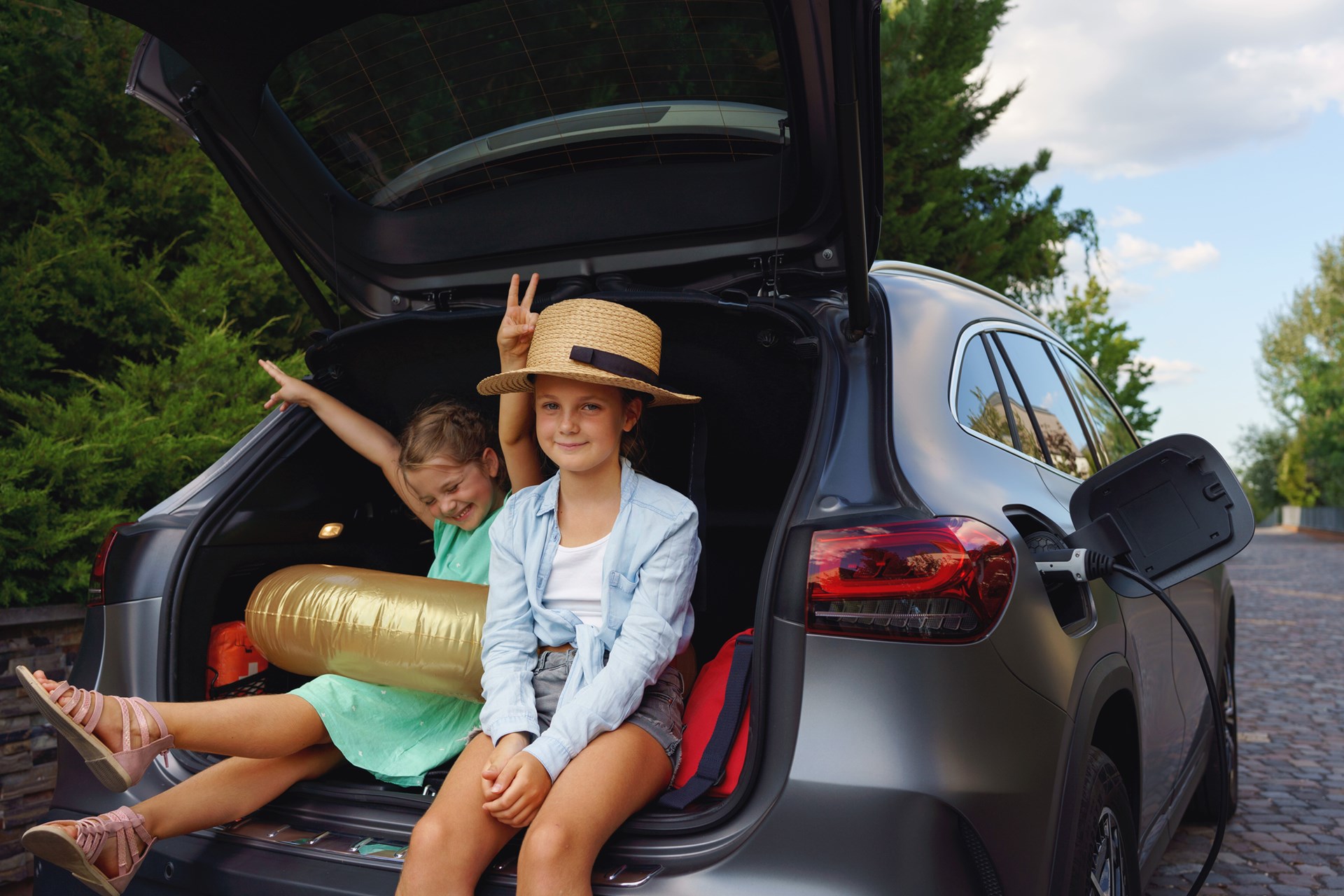How to Road Trip in an Electric Car
Are you wondering if traveling across the U.S. in an electric car is possible? If you would like to take the next great American road trip in an electric vehicle (EV), there is excellent news: Electric car long-distance driving is more convenient than you might think.
As of 2023, driving an electric car across the country is easier than ever. Plus, it is only getting easier — charging stations continue to pop up across the U.S. and abroad. The National Electric Vehicle Infrastructure (NEVI) recently rolled out its initiative to build a nationwide electric charging infrastructure to make electric charging more accessible, especially in rural locations.
Keep reading to learn about the best EVs for travel and general best practices for road tripping in an electric car.
Pick the Best EV for Road Trips
What is the best electric car for cross-country road trips? The key is to choose the best EV for your unique trip and needs. Factors to consider might include the distance you intend to travel and how you plan to get from point A to B. For example, are you traveling in urban areas or trekking across long expanses of open road in the Midwest? Currently, there are more charging stations along highways and interstates near metro areas than in rural, hard-to-reach parts of the country.
Try choosing a vehicle with fast-charge capabilities and a significant driving range. Your car’s driving range is the distance it can travel with a full battery. Most electric vehicles have driving ranges anywhere from 80 to 350 miles. The longer the distance you intend to travel, the higher the driving range you will want your electric car to have. Additionally, having the option to fast-charge your vehicle within 15 minutes to an hour makes traveling long distances much quicker.
Know Your Car’s Charging Capabilities
Though the nation’s electric charging network continues to expand, not all stations offer suitable charging connectors — as electric cars have different charging capabilities. Knowing how your car charges will help you plan and budget time for your journey’s pit stops. There are three levels of electric charging:
- Level 1: Many electric cars use level one or “trickle” charging, which allows drivers to plug into a 120-voltage home socket. Typically, you can charge up to five miles per hour with level one, depending on the vehicle.
- Level 2: Level 2 — known as fast-charging — requires a professionally installed 208 to 240-voltage or National Electrical Manufacturer’s Association (NEMA) 14-30 receptacle connection. You can charge up to 80 miles per hour.
- Level 3 (or DC Fast): Level 3 offers a supercharge of up to 20 miles per minute! Level 3 charging requires a 400 to 900-volt direct current (DC) instead of the standard alternating current (AC).
Plan Your Route and Charging Stops
After you have chosen an electric car, it is time to plan your epic road trip. Understanding how to charge an electric car on a road trip requires careful planning, and knowing where your charging stops are is particularly crucial. You will also want to be mindful of the terrain type, as hilly or mountainous voyages drain your car’s battery quicker.
There are several helpful tools available online to help EV travelers find electric charging stations and avoid running out of battery charge. For example, you can use the U.S. Department of Energy’s Alternative Fuels Data Center to scout stations by your vehicle’s charger type and map your trip accordingly.
If you have a smart device, you can use one of many applications on the road:
- Google Maps: Open up Google Maps, then enter “Electric Charging” into the search box. Like when you need regular gas, Google Maps will pull up all your local electric charging stations.
- PlugShare: PlugShare is a free app that shows you all the electric charging stations near you or your route. PlugShare is unique because you can find non-networked charging stations open to the public. You can also filter searches by charge levels, connector types and cost.
- ChargeHub: ChargeHub — like PlugShare — is a free downloadable app that helps you find and compare electric charging stations to find those that meet your needs.
Bring a Charging Kit
When it comes to road trips, it is best to expect the unexpected. Occasionally, charging stations might be closed, preventing you from charging your vehicle. Though those instances are rare, it is better to be prepared — especially if you are traveling in a rural area where electric charging stations are fewer and farther between.
Tackle this concern head-on by toting along portable chargers and adapters. For example, if you don’t have a Tesla but want to plug into the Tesla charger network, a portable J-1772 Adapter is essential. That said, always ensure your adapter is compatible with your vehicle before plugging in anywhere.
Charge Overnight
Finally, take advantage of overnight charging at charge-friendly RV campgrounds or hotels. Staying overnight to charge your vehicle allows you to relax while gearing up for your next day’s travels. Overnight charging is also crucial if your car does not fast-charge. You do not want to find yourself stranded at an electric charging point for several hours multiple times per trip.
Try booking your camping spots in advance to guarantee you will have a place to charge. Most Kampgrounds of America Campgrounds offer 20, 30 and 50-amp charging receptacles and a universal access charging plug — so EV road trippers can travel confidently knowing their next overnight charge is not far.
Plan Your Next EV Road Trip With KOA!
Are you ready to plan your next action-packed EV road trip? Road tripping in an electric car is a different experience than traveling in a gas-powered vehicle, but it is possible to have a stress-free, eco-friendly journey with careful planning.
Get the most out of your road trip by recharging overnight at a KOA Campground. It’s easy to travel by electric cars with 500+ charge-friendly KOA Campgrounds across the U.S. and Canada. Reserve your spot at a KOA Campground today!
About the Author: Kampgrounds of America
Kampgrounds of America is the largest system of open-to-the-public campgrounds in the world, with over 500 locations across the United States and Canada. Founded in Billings, MT in 1962, KOA’s family of campground brands – KOA Journey, KOA Holiday and KOA Resort – today serve more than a million camping families each year. KOA is dedicated to “connecting people to the outdoors and each other” by providing people with a variety of camping experiences and the information they need to make the most of their camping trip. Read more of their camping and travel resources by visiting KOA.com/blog.

























